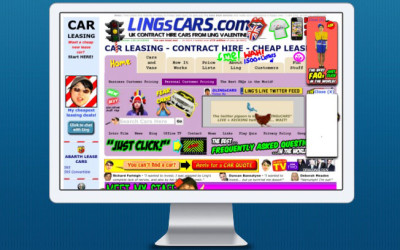If you’re only measuring keyword rankings, you’re barely scratching the surface of what SEO can do for your business. A truly effective SEO audit digs deeper—way deeper. It assesses the technical health, on-page optimization, local visibility, and authority of your website to identify what’s working and what’s silently holding you back in search engine results.
This 10-point SEO audit framework reveals exactly how your site is performing and where improvements will have the biggest impact.
1. Crawlability: Can Google Access Your Site?
Before your site can rank, search engines have to find and understand it. If your site isn’t being crawled properly, you’re invisible by default.
Audit Checklist:
- Use Google Search Console to check for crawl errors.
- Review your
robots.txtfile to ensure important pages aren’t being blocked. - Submit and verify an XML sitemap to guide search engine crawlers.
2. Search Engine Visibility: Are You Even Showing Up?
Ranking data tells the story of your search performance. Tracking how you appear on Google (and where) is crucial for spotting trends and opportunities.
Audit Checklist:
- Analyze keyword rankings using tools like Google Search Console or Semrush.
- Monitor average position, impressions, and click-through rates (CTR).
- Identify top-performing pages and low-hanging fruit that can be optimized.
3. SERP Features: Are You Missing Valuable Real Estate?
Modern search results are rich with features—featured snippets, image packs, AI-generated answers, and more. Ranking in these areas means more traffic and visibility.
Audit Checklist:
- Identify which SERP features show up for your target keywords.
- Look for opportunities to win featured snippets or video results.
- Optimize content with structured formatting and direct answers.
4. Backlink Profile: How Strong Is Your Domain Authority?
Backlinks remain a major ranking factor. But not all links are created equal—quality and relevance matter more than ever.
Audit Checklist:
- Use backlink tools like Ahrefs or Moz to analyze your link profile.
- Assess the authority and trustworthiness of referring domains.
- Compare your backlink trends against competitors to spot gaps or strengths.
5. Local Pack Rankings: Do You Appear in the Map 3-Pack?
For service-area businesses, appearing in Google’s Local Pack can dramatically increase leads. If you’re not showing here, your competitors are getting those calls.
Audit Checklist:
- Run local searches for your services in your target area.
- Use tools like BrightLocal to track local visibility.
- Evaluate your position within the 3-Pack and optimize accordingly.
6. Google Business Profile: Is It Fully Optimized?
Your Google Business Profile is one of the most powerful (and free) tools for local SEO. A complete, active profile helps build trust and visibility.
Audit Checklist:
- Ensure NAP (name, address, phone) info is consistent and accurate.
- Add high-quality photos and encourage customer reviews.
- Regularly post updates and respond to reviews.
7. Meta Titles: Are They Compelling and Clickable?
Your meta title is often the first impression a user sees on Google. If it’s too long, too vague, or missing keywords, you’re losing potential traffic.
Audit Checklist:
- Make sure titles are 50–60 characters long and include primary keywords.
- Write for both SEO and humans—focus on clarity and benefit.
- Avoid duplication and ensure titles are unique per page.
8. Meta Descriptions: Are You Driving Clicks from Search?
Meta descriptions don’t directly affect rankings, but they do influence CTR—which Google does care about. A well-written description can mean the difference between a scroll and a click.
Audit Checklist:
- Keep descriptions between 150–160 characters.
- Include a call-to-action and use emotional or value-driven language.
- Incorporate secondary keywords naturally.
9. Headings: Are You Using H1 and H2 Tags Strategically?
Proper heading structure not only improves readability but also helps search engines understand your content’s topic hierarchy.
Audit Checklist:
- Use one H1 per page, and make sure it contains the primary keyword.
- Use H2s to organize key sections and include supporting keywords.
- Avoid generic headings—make them useful and relevant.
10. Open Graph Tags: Are You Share-Ready on Social?
Social shares still drive traffic, but only if your content looks good when it’s shared. Open Graph markup ensures your link previews are clean and clickable.
Audit Checklist:
- Use tools like Facebook Sharing Debugger to validate OG tags.
- Set custom OG titles, images, and descriptions for key pages.
- Ensure images are properly sized and display well on both Facebook and LinkedIn.
Final Thoughts: Is Your Website Working for You—or Against You?
An SEO audit like this doesn’t just check boxes—it reveals where your online presence is thriving and where it’s silently stalling. Whether you’re managing a local service business, an eCommerce store, or a national brand, these 10 areas are essential to monitor regularly.
Want to know where your site stands?
Book a call or schedule a full SEO strategy session and start turning traffic into leads, and leads into loyal customers.
- How a Boutique Web Design Agency Offers More Personalized Service - June 23, 2025
- When Should You Redesign Your Website? 7 Warning Signs - June 20, 2025
- We’re Honored: Named One of the Best Web Design Blogs in Florida by FeedSpot - June 10, 2025




